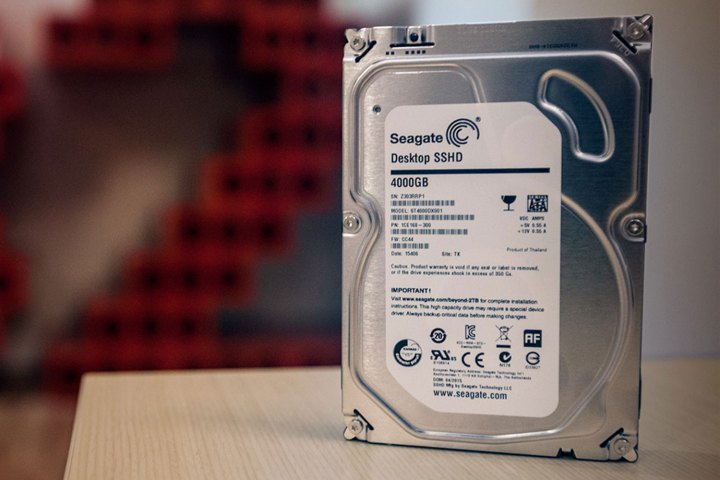
“Our eight terabyte product leads the market in cost and performance and we are pleased with the ramp of our 10-terabyte product in terms of quality, performance, and customer qualifications,” he said.
Luczo also said that Seagate customers are currently testing its 12TB helium-based hard drive and providing positive feedback. It will follow the 10TB version released a year ago for the enterprise sector, relying on helium to create a turbulence-free environment inside the hard drive shell for packing in more spinning platters. These platters are what store data, which are read like a record player by stationary read/write heads.
Seagate’s current 10TB helium-based drive includes seven spinning platters and 14 heads crammed into a 3.5-inch form factor. Helium reduces the amount of friction and resistance caused when spinning platters are close together. That reduction in turn lowers the amount of power the drive will pull, reduces the level of cooling the drive needs, and enables Seagate to increase its capacity by cramming in more platters.
Drives pushing 10TB or more are typically used by the enterprise sector or in network-attached storage devices. Right now, the biggest mainstream-focused desktop hard drive appears to be Seagate’s 8TB STBD8000400 model for $330 while the biggest enterprise-grade hard drive is Seagate’s helium-filled ST10000NM0086 model costing $466.
In the mainstream market, mechanical hard drives are being replaced by NAND-based solid state drives (SSDs) as the primary storage device. SSDs have no moving parts and store data in cells rather than magnetically in tracks on a spinning platter. That means SSDs are faster, and ideal for housing the operating system and installed programs, enabling extremely fast system boot and program load times.
In the initial days, SSDs were rather expensive. But as prices have come down and capacities have gone up, hard drives are becoming the secondary solution in systems for storing files, music, video, and so on. However, the enterprise sector is a different story, given that data centers mostly rely on mechanical drives, and moving from HDDs to SDDs would be costly.
Despite the declining hard drive sales in the mainstream market, Seagate said in 2013 that it plans to produce a 20TB hard drive by 2020 using shingled magnetic recording. Seagate compared this method to shingles on a roof, stating that the data tracks overlap each other, thus increasing the density of each track and the platter’s overall aerial density.
Luczo said in the conference call that delivering hard drives up to 20TB in capacity “takes a lot of investment, a lot of technology.”


